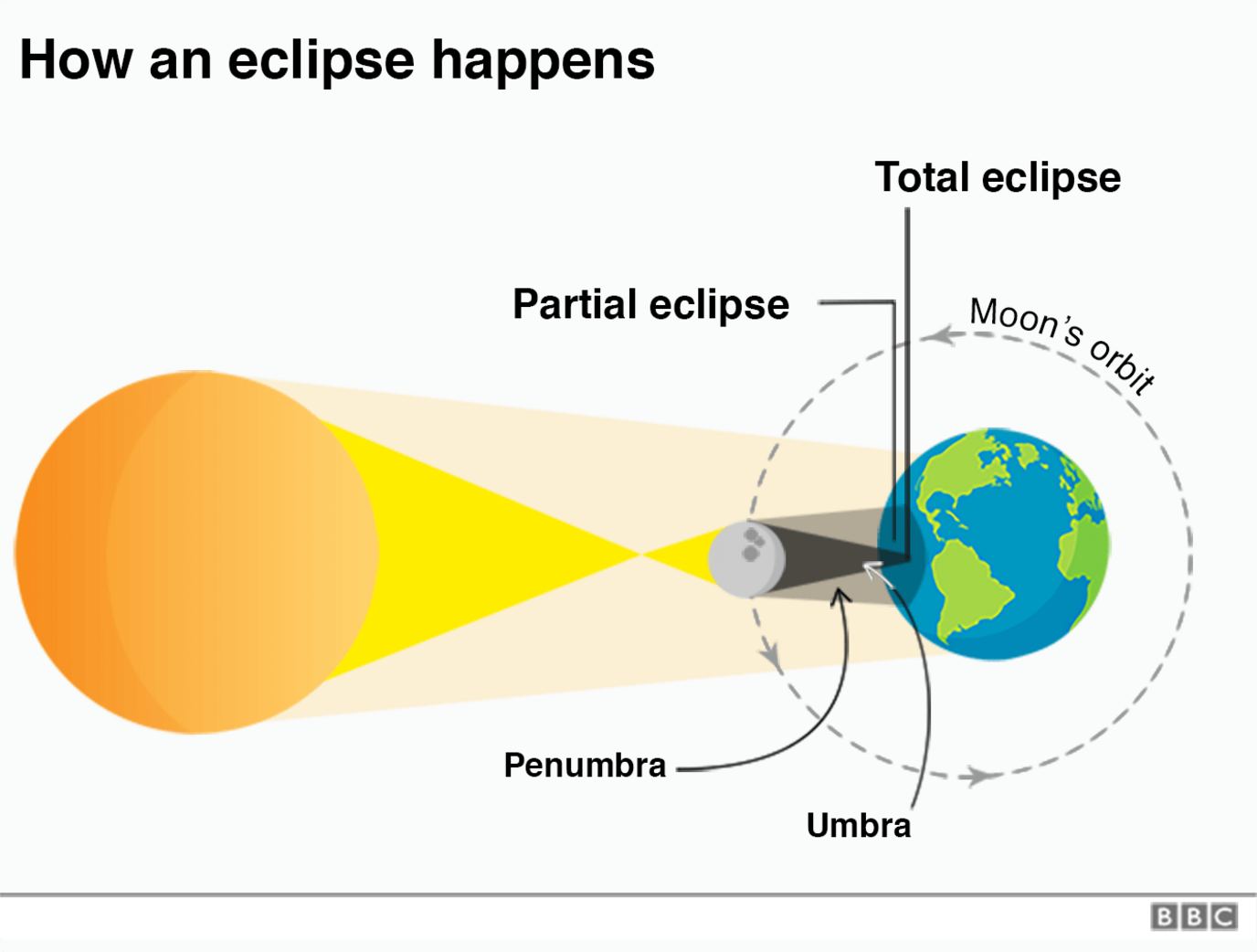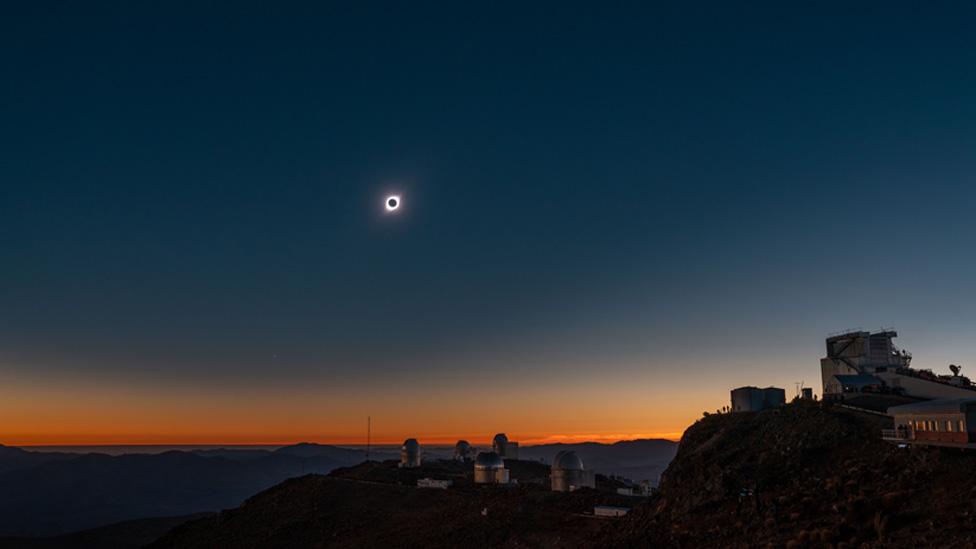Total solar eclipse 2019: Sky show hits South America
- Published
Spectators cheered as the total solar eclipse took place
Thousands of skywatchers gathered in South America on Tuesday to witness a rare solar eclipse.
Beginning in the Pacific, the 6,000-mile long band of darkness carved its way across areas of both Chile and Argentina.
The eclipse also made its way across several of the world's most powerful telescopes, all located in the region.
As always, people were urged to take great care during the eclipse. Gazing into the Sun can damage the eyes.
Proper protection is needed, such as the use of approved solar glasses.
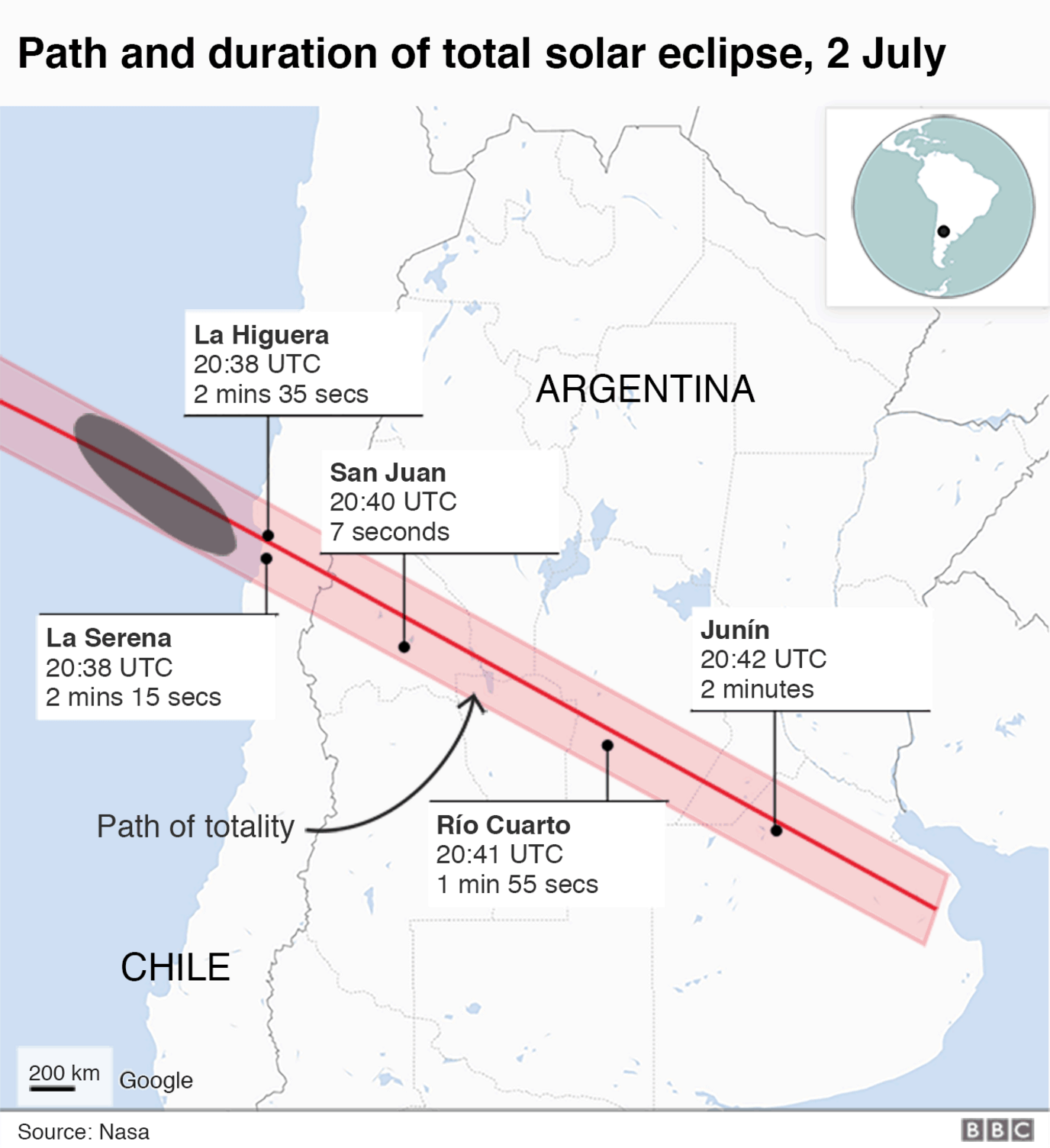

The Moon's great shadow, or umbra, first touched the ocean surface east of New Zealand.
The first - and only - piece of land in the Pacific to lie in the path of the eclipse's "totality" was tiny Oeno Island - part of the Pitcairns British Overseas Territory.
This uninhabited atoll was plunged into darkness for nearly three minutes, starting at 10:24 local time (18:24 GMT).
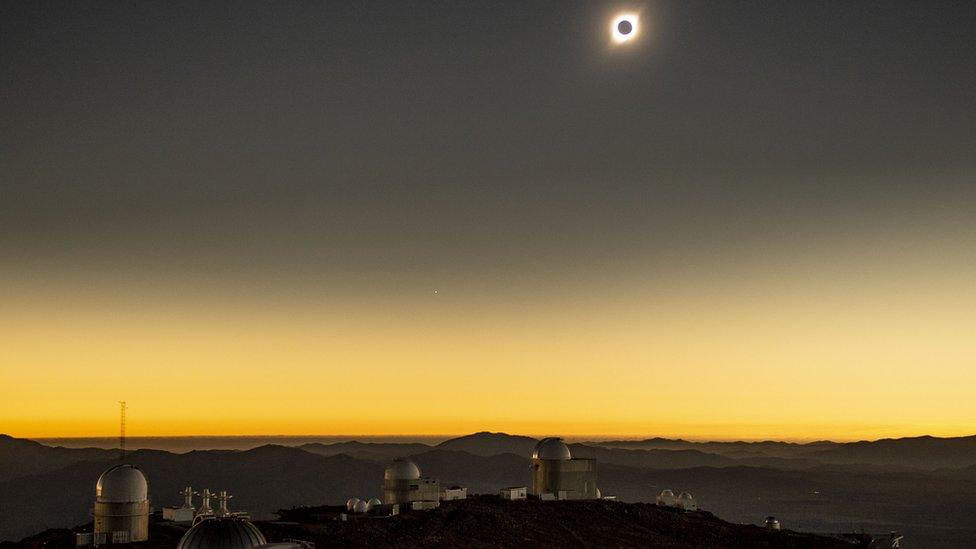
Chile is home to some of the world's most powerful telescopes
The umbra then reached across to the coast of Chile, near La Serena, arriving at 16:38 local time (20:38 GMT).
Its path stretched out across several parts of Coquimbo in northern Chile, an area known for its dark skies and numerous observatories.
Tickets worth $2,000 (£1,588) each sold out in three minutes for the privilege of watching the eclipse alongside astronomers at the European Southern Observatory, high in the Atacama desert.
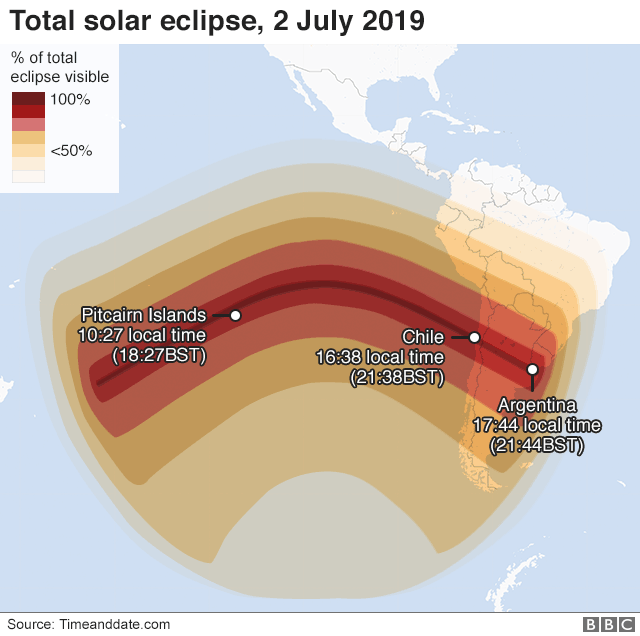

The umbra passed swiftly over the Andes mountains and across the continent. Among those last to experience totality were the inhabitants of Chascomús in the district of Buenos Aires at 17:44 local time (20:44 GMT), not long before sunset.
Some of the classic features of a full solar eclipse were on show. These included "Baily's beads," which arise as the last shafts of sunlight drive through valleys on the Moon; and the "Diamond Ring", which is the single brilliant point of light that signals the beginning and end of totality.
"You're completely mesmerised by totality," said astronomer Patrick McCarthy.
"But I have to say, no matter how long it lasts - it feels like eight seconds. You're so completely caught up, you find yourself saying, 'go back, go back; I wasn't done! It all goes by in an instant."
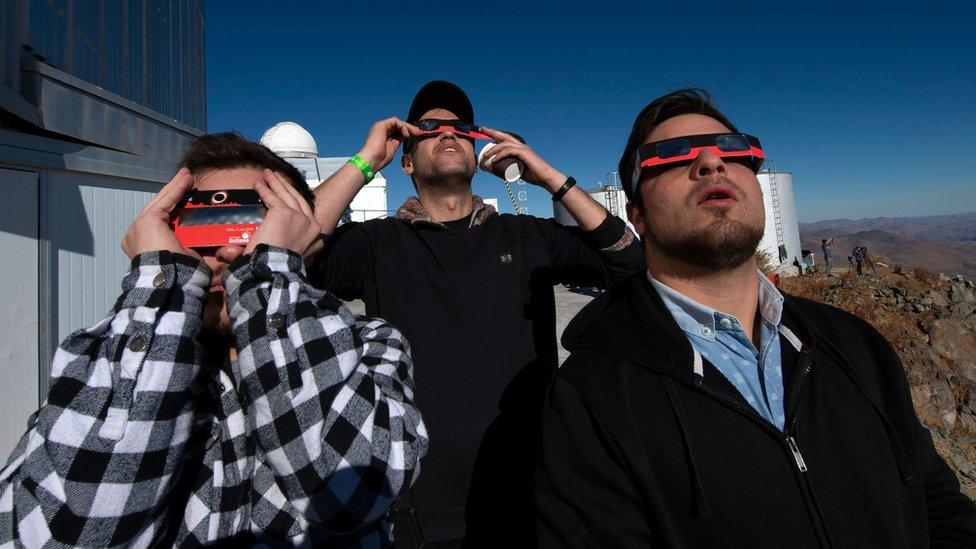
People were advised to wear proper protection to protect their eyes from sunlight during the eclipse
Dr McCarthy watched this event in Chile. He's Vice President of the Giant Magellan Telescope (GMT), external facility, which is being built in the Atacama Desert.
The path of totality passed fractionally to the south of the telescope site, and so the astronomer, colleagues and friends took a short drive to make sure they were in just the right spot.
"Going into a total solar eclipse is a remarkable feeling," said Dr McCarthy. "The colours get bluer, the shadows change and everything on the ground looks washed out. It's as if the world is becoming darker, almost monochromatic."
The GMT is a next-generation telescope that will have a 24.5m-wide primary mirror system. Its infrastructure is steadily being put in place atop Cerro Las Campanas, with first observations of the sky due to begin in late 2026, with full operation expected in 2028.
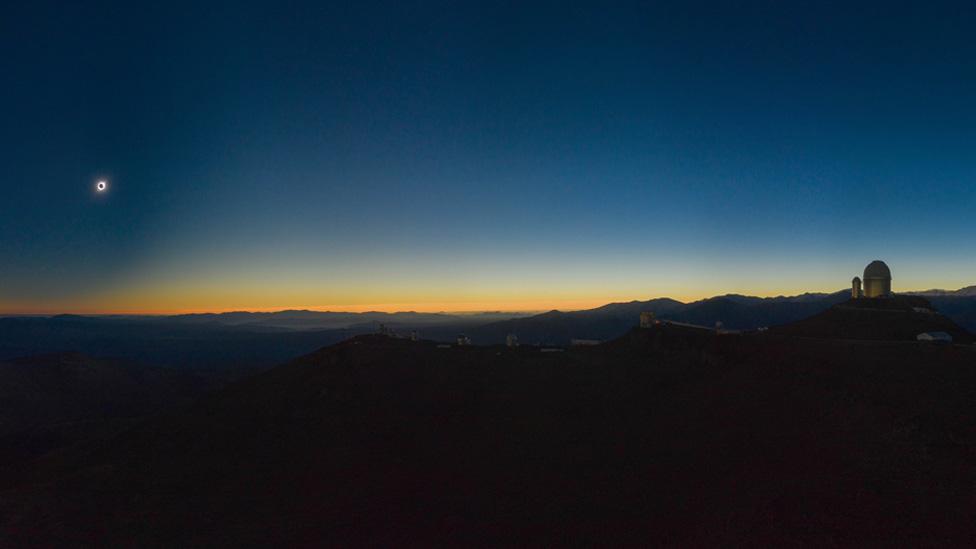
Although the emphasis in a total solar eclipse is always on the narrow path of full shadow, a wider area is able to appreciate a partial event of varying darkness.
On this occasion this meant all of the rest of Chile and Argentina, as well as Peru, Ecuador, Paraguay, Bolivia, Uruguay, and parts of Colombia, Brazil, Venezuela and Panama. It was really just the northern coast of South America that missed out.
South America is also expected to see the world's next total solar eclipse - this time on 14 December, 2020.
